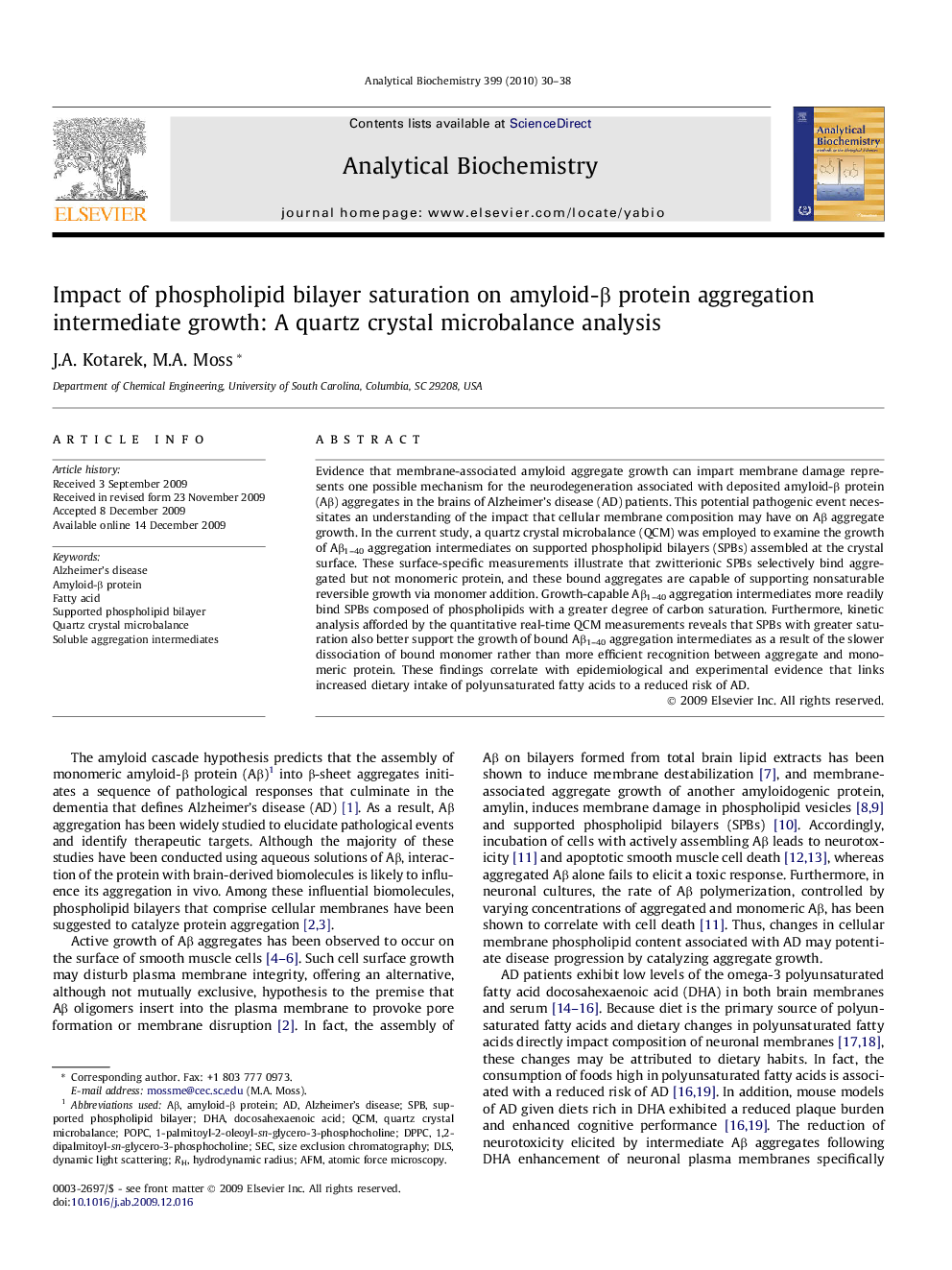| Article ID | Journal | Published Year | Pages | File Type |
|---|---|---|---|---|
| 1175342 | Analytical Biochemistry | 2010 | 9 Pages |
Abstract
Evidence that membrane-associated amyloid aggregate growth can impart membrane damage represents one possible mechanism for the neurodegeneration associated with deposited amyloid-β protein (Aβ) aggregates in the brains of Alzheimer's disease (AD) patients. This potential pathogenic event necessitates an understanding of the impact that cellular membrane composition may have on Aβ aggregate growth. In the current study, a quartz crystal microbalance (QCM) was employed to examine the growth of Aβ1-40 aggregation intermediates on supported phospholipid bilayers (SPBs) assembled at the crystal surface. These surface-specific measurements illustrate that zwitterionic SPBs selectively bind aggregated but not monomeric protein, and these bound aggregates are capable of supporting nonsaturable reversible growth via monomer addition. Growth-capable Aβ1-40 aggregation intermediates more readily bind SPBs composed of phospholipids with a greater degree of carbon saturation. Furthermore, kinetic analysis afforded by the quantitative real-time QCM measurements reveals that SPBs with greater saturation also better support the growth of bound Aβ1-40 aggregation intermediates as a result of the slower dissociation of bound monomer rather than more efficient recognition between aggregate and monomeric protein. These findings correlate with epidemiological and experimental evidence that links increased dietary intake of polyunsaturated fatty acids to a reduced risk of AD.
Keywords
Related Topics
Physical Sciences and Engineering
Chemistry
Analytical Chemistry
Authors
J.A. Kotarek, M.A. Moss,
